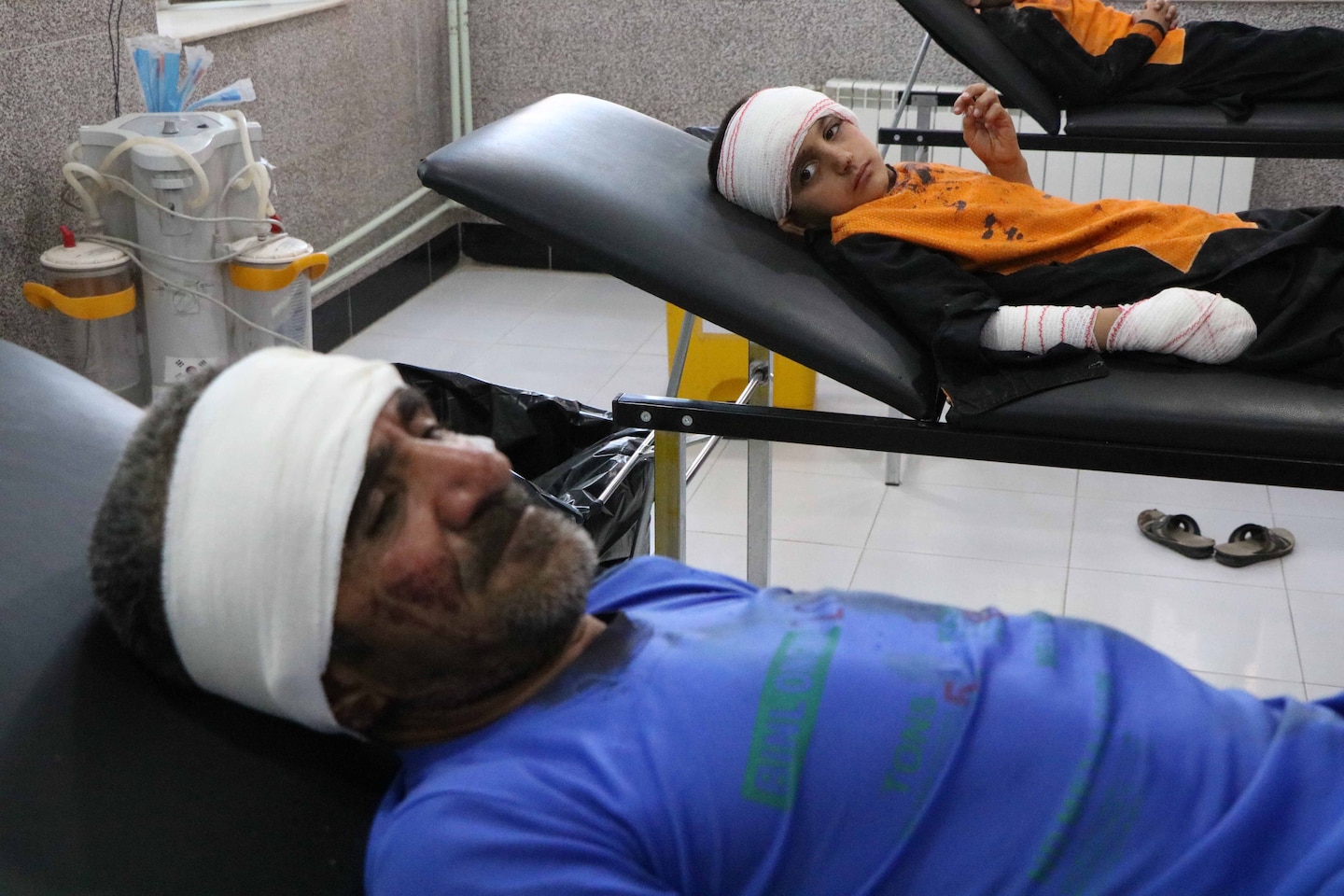Afghan airstrike kills civilians and Taliban supporters at prisoner’s homecoming

The airstrikes were confirmed by the Afghan Defense Ministry, and unconfirmed reports indicated that as many as 45 people, including insurgents and civilians, had been killed or wounded. A spokesman for the governor of Herat, Jailani Farhad, said that the strikes had targeted at least six Taliban commanders who had carried out major assaults.
Aerial footage provided by the ministry showed a group of heavily armed men mingling on the ground near a truck and several motorcycles before the strike.
But the reports of numerous civilian casualties were likely to provoke strong criticism in Afghanistan, where such attacks by both Afghan and U.S. forces have been widely condemned. A spokesman for U.S. military forces in Kabul said there was no U.S. role in the attack.
The Defense Ministry said it would investigate the reports of civilian deaths.
“The national defense and security forces have the responsibility to protect the lives and property of the people,” the statement said. It added that Afghan officials would “not spare any effort” to learn what had happened and would release its findings to the public.
Zalmay Khalilzad, the U.S. envoy who negotiated a peace agreement with Taliban officials in February, said in a tweet Thursday that photographs and “eyewitness accounts” suggested that “many civilians including children are among the victims of an Afghan airstrike. We condemn the attack and support an investigation.”
Khalilzad also condemned ongoing Taliban attacks, which have continued unabated since the bilateral deal was signed, and he said the violence on both sides should be curbed to pave the way for peace talks among Afghans. “More graves will not bring negotiations forward,” he said.
In the first half of this year, 1,232 civilians were killed and 1,744 wounded in conflict incident, the Afghanistan Independent Human Rights Commission reported.
A Taliban spokesman, Mohammad Yousuf Ahmadi, said in a statement that two airstrikes in Herat had killed eight civilians and wounded 12. He did not mention whether any insurgents had died, but declared that “such attacks will compel recently freed prisoners who wish to live normal lives to take up arms once more against the enemy.”
A major stumbling block for long-delayed intra-Afghan peace talks has been a dispute over the release of 5,000 Taliban prisoners. The Afghan government has refused to release about 400 of them, saying they are criminals or hardened combatants who would immediately return to battle. The Taliban have insisted that all the individuals on their original list must be freed before talks can start.
In other recent statements, Taliban officials have singled out continued U.S. and Afghan airstrikes as a source of provocation that can only exacerbate the conflict. After a massive Taliban bombing last week in the northern province of Samangan, a Taliban spokesman said such “escalations of violence” were only “reactions” to Afghan government attacks.
The Taliban has not been as active in Herat as in other regions of the country, but has made heavy inroads in neighboring western provinces and reportedly received covert backing from next-door Iran.
The insurgents have also established tight control over several districts, especially Guzara and Adraskan, south of Herat city, in a windswept region straddling an ancient camel route from Kandahar city to Iran.
Two years ago, when the Taliban agreed to a three-day nationwide truce, there were scenes of insurgent fighters hugging and praying with Afghan troops and elders. But in Guzara, a meeting during the truce between insurgent and provincial leaders, attended by a Washington Post reporter, was tense and hostile.
Fighters cradled assault rifles and covered their faces with scarves. One speaker denounced the government of President Ashraf Ghani as “un-Islamic,” and others vowed to fight it to the death.
Wednesday’s doomed celebration for the released commander, identified as Ghulam Nabi, was held in a village compound between Guzara and Adraskan. Despite the footage later aired on Afghan TV showing armed fighters at the site, Rahmati and many others like him were civilians, drawn by family ties rather than Taliban affiliation.
“All the people ran and hid, but there was shooting and bombing,” Rahmati said. “Many could not get away.”
Sharif Hassan contributed to this story.






